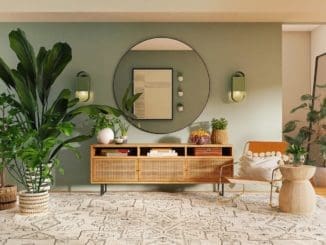1. Walls
Walls are a backdrop for the rest of the room. Choose a bold, vibrant paint or wallpaper for a dramatic background, or use neutral tones for a more tranquil environment.
2. Flooring
Carpets cannot be beaten for sheer underfoot comfort, safety (non slip) and insulation. As a rule, use lighter carpets or flooring to create an open airy feel for a room or darker shades to make a room seem smaller and cozier. 3. Furniture
Scatter cushions and slipcovers can change the look of a couch or chair and are an inexpensive way to update a well-worn piece. There’s no need to live with ugly dark lacquers and varnishes. Wooden furniture can be updated to suit your décor using any of the modern ranges of tinted varnishes and stains that are cost effective and easy to apply.
4. Window treatments
Curtains, blinds and shutters can create interesting effects in a room, so don’t be afraid to leave windows untouched if the view is attractive. A stunning view can be a more impressive design feature than a piece of art hanging next to it. 5. Lighting
Use spotlights to highlight showcase features like a piano, painting or sculpture. Spotlighting at floor level can create dramatic lighting effects. Use lamps for a cozier atmosphere.
6. Artwork
Hang at eye level, generally so that the mid-point of the piece is 1,5 meters high. It will lose its impact if it is too high or too low. If you are hanging a painting above a sofa or chest of drawers the base of the frame should be between 12 and 25cm above the furniture. 7. Accessories
The key here is balance. Any collection of objects well displayed adds the finishing touch, such as candlesticks, vases, throws and scatters.
8. Plants
Plants and flowers add colour and fragrance to an environment.




Be the first to comment